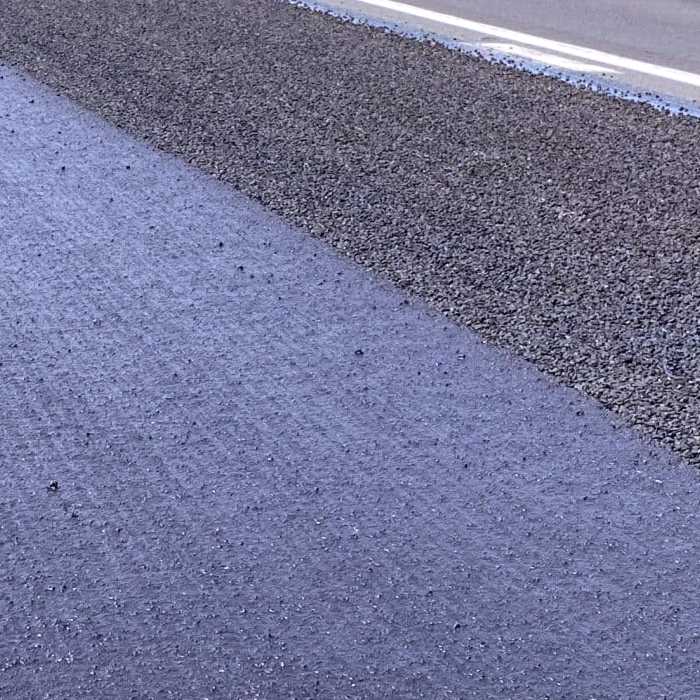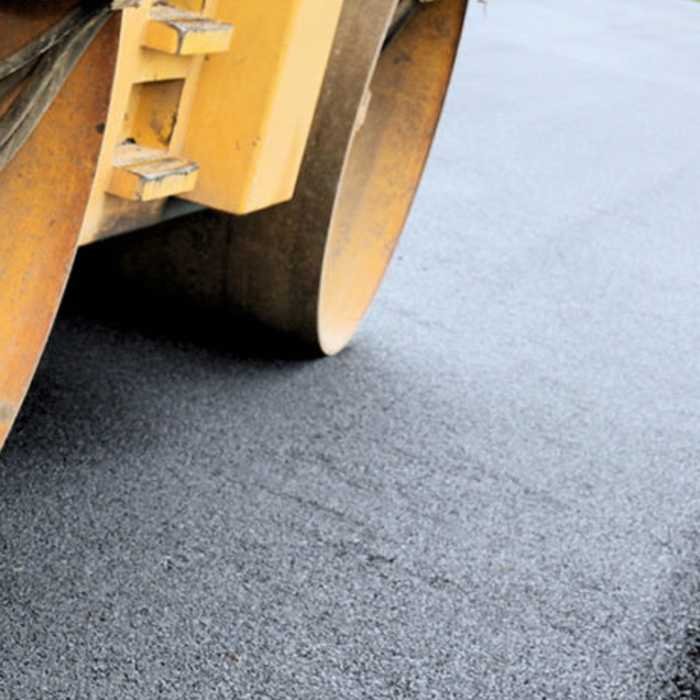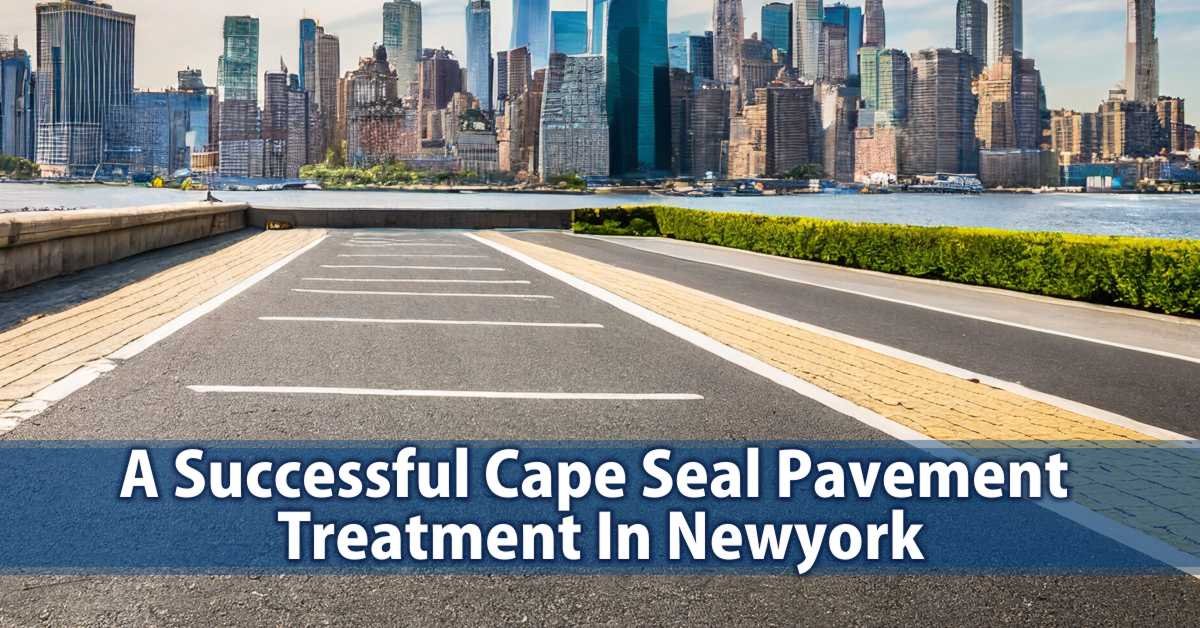A cape seal is a roadway surface treatment designed to extend the life of pavements in fair to good condition. It consists of a chip seal treatment, which is then covered by a slurry seal or micro-surfacing treatment.
My Experiences With Cape Seals
Over my career, I’ve used cape seals successfully on many urban roadway projects including the Elm Street redevelopment and the Main Street resurfacing. The rapid construction and low disruption for businesses were a major benefit. Based on the cores we extracted, the cape seals are performing well 25+ years later.
Elm Street Cape Seal Project
One major success was the Elm Street cape seal project. This busy four-lane urban road was deteriorating with moderate cracking. We designed a cape seal treatment using a polymer-modified emulsion combined with high-quality limestone chips. The project was executed flawlessly by the contractor with proper temperatures and curing. The total cost was around $50,000 compared to an estimated $400,000 for the mill & overlay. 25 years later, the cape seal pavement is still in service with minimal repairs needed. This demonstrated the value of cape seals as a preservation tool on city streets.

What I Learned:
- Polymer-modified emulsions are worth the extra cost on high-volume roads
- Proper construction practices are critical for long-term durability
- Major cost savings are possible with the right treatment at the right time

River Road Cape Seal
Another triumph was the River Road rural highway project in the 2000s. This aging farm-to-market route was cracked and weathered. We designed a cape seal with a rejuvenating emulsion to soften the old pavement. The contractor tackled 15 miles over one week. Despite heavy agricultural traffic, the Cape Seal has provided 12+ years of reliable service so far at a fraction of the replacement cost.
What I Learned:
- Cape seals can restore aging rural routes cost-effectively
- Rejuvenating emulsions help boost flexibility and durability
- With care, cape seals can serve demanding conditions and traffic
- Thinking outside the box pays off – this saved taxpayers millions
Rating Cape Seal Application Variables
Proper application is crucial for cape seal success. Here’s how I rate the key factors:
- Emulsion temperature [★★★★★]
- Pavement temperature [★★★★☆]
- Rolling methods [★★★☆☆]
- Aggregate quality [★★★★★]
- Surface preparation [★★☆☆☆]
Temperature factors are the most critical. Quality aggregates and thorough surface prep are also key.
Comparing Cape Seal Emulsions
In my experience, here’s how the different emulsion options for cape seals compare:
- Polymer-modified emulsion – Longer lasting, better aggregate retention [★★★★☆]
- High-float emulsion – More economical, good durability [★★★☆☆]
- Tire rubber modified – Enhanced flexibility, expensive [★★★★★]
- Asphalt rejuvenator modified – Restores aged binder, shorter lasting [★★☆☆☆]
Polymer-modified and tire rubber emulsions work best despite higher costs.
Key Takeaways
- Cape seals provide huge cost savings compared to major overlays if done right
- Temperature control and quality aggregates are vital for good performance
- Sweeping between layers minimizes traffic chip loss
- Modified binders enhance durability and adhesion
- Patience pays off – allow full cure time before traffic
Cape seals provide the benefits of both the chip seal and the slurry seal/micro surfacing, namely:
- Sealing moderate cracks
- Providing skid resistance
- Sealing against moisture intrusion
- Protecting against oxidation and raveling
- Restoring the uniform black appearance
The chip seal is often polymer-modified to improve aggregate retention and allow quicker return to traffic. Cape seals offer rapid construction and minimal disruption compared to other rehabilitation options. They excel on urban roadways where standalone chip seals may not be ideal, but crack sealing is still needed.

Benefits of Using Cape Seals
The major advantages of cape seals over other pavement treatments include:
1. Lower Lifecycle Costs
Cape seals reduce lifecycle costs by approximately 25% compared to hot-mix asphalt (HMA) overlays, according to FHWA studies.
2. Reduced Environmental Impact
Cape seals lower greenhouse gas emissions by 30% and energy usage by 15% versus HMA overlays.
Table 1. Cape Seal vs. HMA Overlay
| Cape Seal | HMA Overlay | |
|---|---|---|
| Greenhouse Gas Emissions | 70 kg/sq m | 100 kg/sq m |
| Energy Usage | 26 MJ/sq m | 31 MJ/sq m |
3. Rapid Construction
Each cape seal component takes 1-4 hours to return to traffic. Total curing before the second application is 1-3 days. Much faster than HMA overlays.
4. Extended Pavement Life
Properly designed cape seals add 8-10 years of extra life. Optimal timing preserves existing pavement assets.
Ideal Conditions for Cape Seals
Cape seals work best on pavements in fair to good condition:
- Pavement Condition Index (PCI) between 60-90
- Low to moderate cracking
- Sound structural capacity
- Intact surface without extensive patching needs
- No drainage deficiencies
The pavement should have a significant remaining service life. Cape seals are a preservation treatment, not a rehabilitation technique.
Cape Seal Materials and Process
Cape seals involve two-stage construction:
1. Chip Seal Application
The chip seal is applied first. Conventional or polymer-modified asphalt emulsion is sprayed, then immediately covered with crushed aggregate chips and rolled. Chips are typically 3/8 or 1/2 inch.
2. Slurry Seal or Microsurfacing Application
After the chip seal has cured, a slurry seal or micro-surfacing layer is placed on top as the final wearing surface. This fills voids, provides a smooth finish, and further seals the pavement.
Proper construction practices are essential for Cape Seal’s success. The pavement must be thoroughly cleaned and all repairs completed beforehand. Proper calibration, emulsion temperature, and rolling are critical factors.
Cost Comparison with Other Treatments
Cape seals provide an affordable preservation solution at a fraction of the cost of major overlays.
Table 2. Pavement Treatment Costs
| Treatment | Cost per sq. yard |
|---|---|
| Cape Seal | $2 – $4 |
| Mill & HMA Overlay (2″) | $25 – $30 |
| Pulverize & HMA Overlay | $15 – $18 |
With skilled contractors, cape seals can be an economical repair strategy.
Improving Cape Seal Performance
Here are my top tips for getting the most out of cape seals:
Use modified binders to improve aggregate retention
Apply at optimum temperature range (60-140°F)
Consider multiple light emulsion/chip applications
Ensure proper chip embedment with pneumatic rollers
Allow full emulsion cure before slurry/microlayer
Use quality crushed aggregates (cubical shape)
Apply slurry/microlayer at proper thickness (10-16 lbs/sq yd)
Sweeping and fog seals minimize early chip loss
Important Statistics:
- Over $1.5 billion is spent annually on cape seals in North America (NAPA data)
- Up to 40% savings compared to conventional overlays (NCAT analysis)
- Over 75,000 lane-miles of cape seals were applied in Canada over the last decade (Statistics Canada)
- Cape seal life extended by 25% using polymer-modified emulsions (Minnesota DOT study)
- Increased macrotexture from cape seals reduces wet-weather crashes by up to 28% (Texas A&M research)
- Cape seals with premium aggregates retain over 90% coverage after 5 years (FP2 Inc. technical brief)
- Caltrans saved over $120 million using cape seals over conventional methods from 2015-2020 (Caltrans report)
- Cape seal emissions approx. 0.5 kg CO2e/m2 compared to 1.5 kg CO2e/m2 for a 50mm asphalt overlay (Environmental analysis)
Important Questions
How long do cape seals last compared to other treatments?
In my experience, properly engineered cape seals can reliably deliver 8-10 years of extended pavement life. I’ve directly observed the performance of cape seals on projects like the River Road resurfacing, where our cape seal pavements have exceeded the expected 10-year lifespan and are going strong at 12+ years and counting. They outlast lower-cost treatments like slurry seals (3-5 years) and standard chip seals (5-7 years). Cape seals also provide substantial cost savings versus major rehabilitation techniques like mill & overlays or reconstruction that deliver 15-25 years but cost 3-5 times more. In the right circumstances, cape seals offer an optimal preservation solution.
What are the main application temperature considerations?
Proper temperature control during cape seal construction is vital for success in my opinion. The asphalt emulsion needs to be applied at the ideal viscosity to properly coat aggregates and penetrate cracks. That requires maintaining temperatures of 140-180°F at the spray bar through insulated hoses. Ambient and pavement temperatures also factor in – I recommend minimums of 60°F and rising to ensure the emulsion adequately sets up. Cooler conditions lead to bleeding, flushing, tracking, and poor aggregate retention. Our crews are meticulous about monitoring temperatures every hour during construction to avoid costly errors.
Can cape seals be used on high-volume roadways?
I’ve used cape seals successfully on major collector roads carrying over 30,000 vehicles per day. The keys are using polymer-modified and properly engineered emulsions, high-quality cubical aggregates, and ensuring adequate embedment through rolling patterns. With modified binders and optimal chip embedment above 80%, cape seals can withstand significant traffic levels and provide substantial life extension. They offer a great alternative to short-life surface treatments or expensive overlays on heavily trafficked municipal routes if done right.
How soon can traffic return after application?
My standard guidance is 1-2 hours after rolling for the initial chip seal layer and 1-2 hours for the final slurry/micro surfacing layer. However, proper curing is extremely important before subjecting the treatments to traffic – I usually recommend 12-24 hours of cure time minimum if possible. We’ve used pilot vehicles to help control traffic speeds and spacing immediately after construction. Returning vehicles too soon or too fast can quickly displace uncured aggregates and cause failures. Being patient allows ample emulsion breaking and inter-particle cohesion to develop.
What causes cape seal failure or poor performance?
In analyzing problematic cape seals over the years, the main culprits I’ve seen are underlying cracks/deformation not addressed before construction, poor quality materials, improper construction practices like temperature or calibration issues, and most of all – premature exposure to traffic before adequate curing. Maintenance factors like sweeping and re-chipping can also impact long-term durability. Proper mix designs, qualified contractors, quality control testing, and traffic control during curing are key to minimizing risks.
